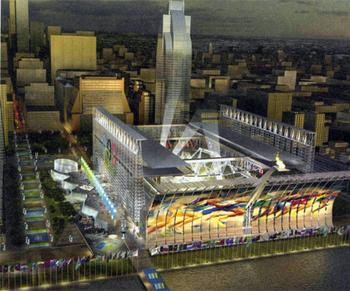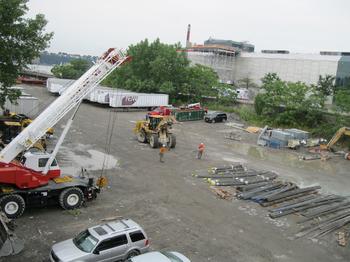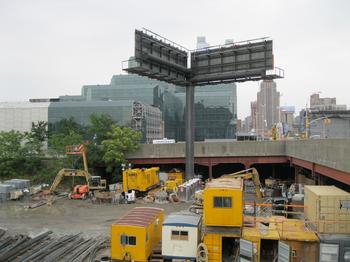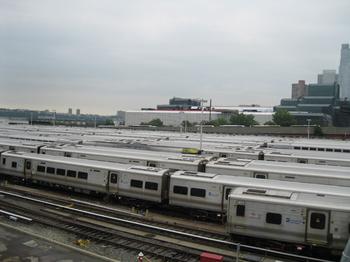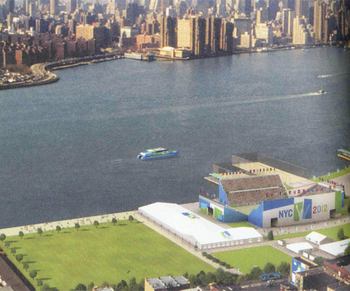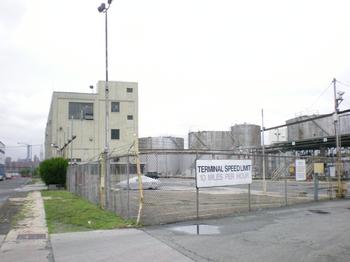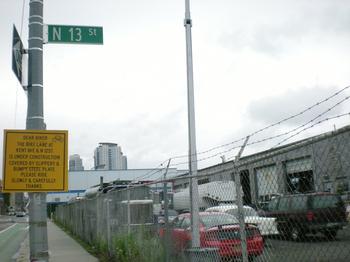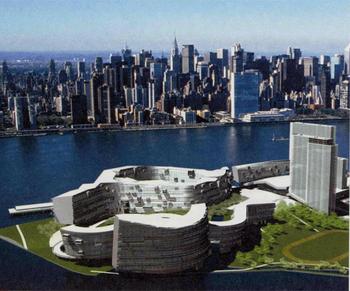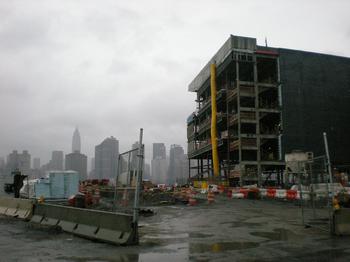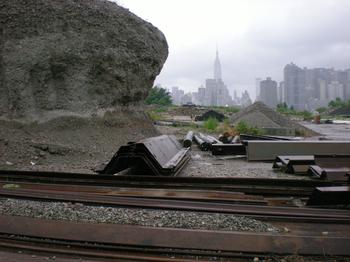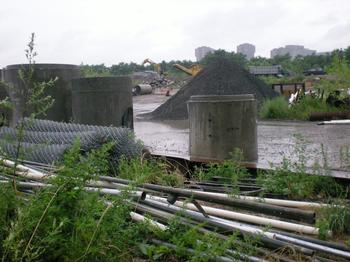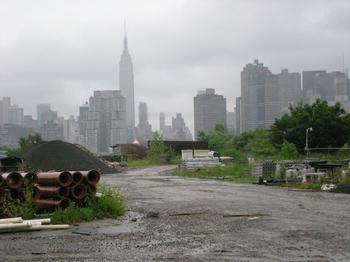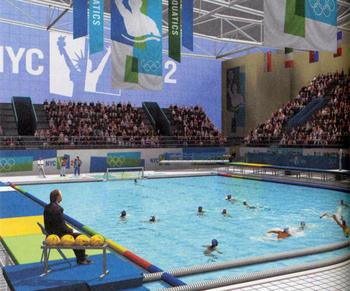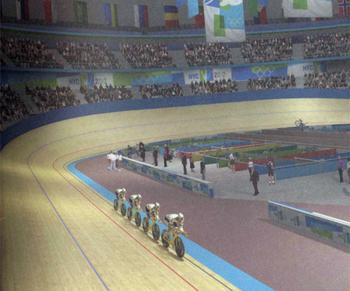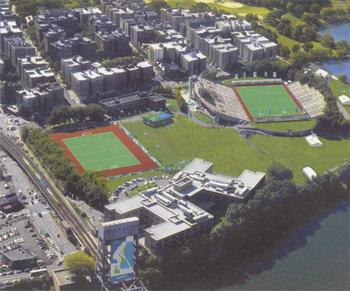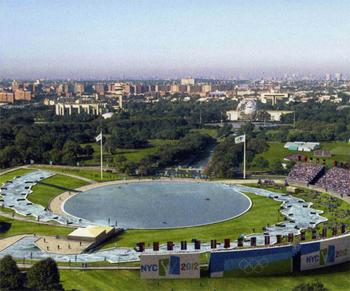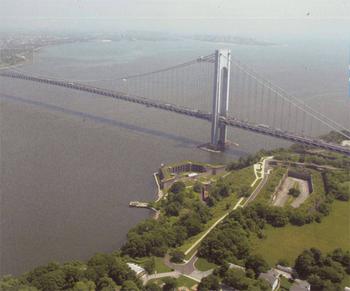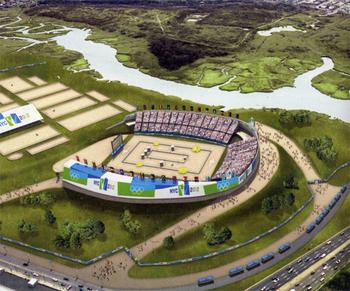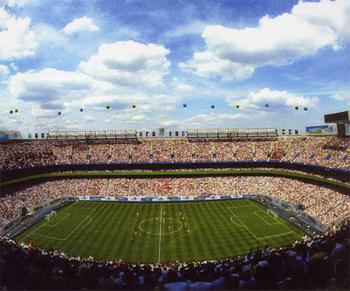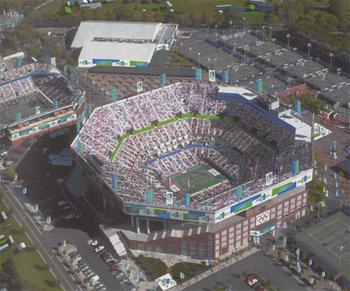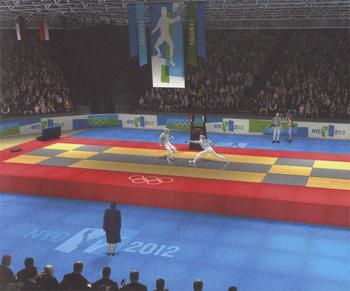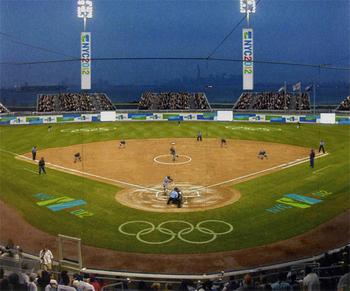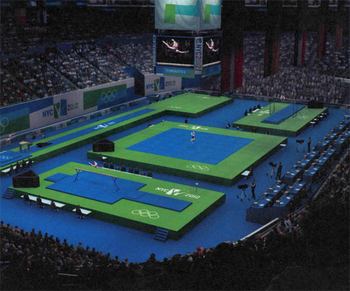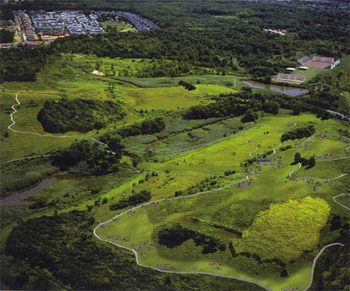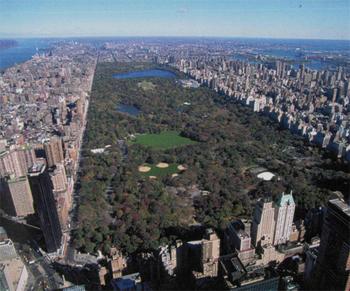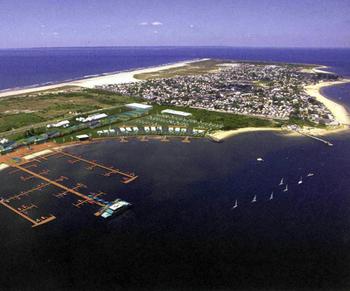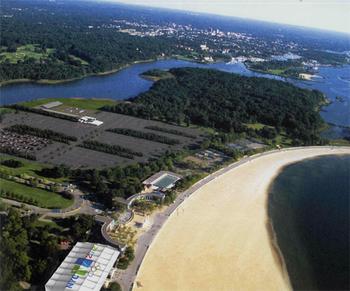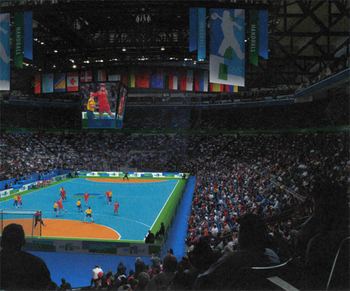Two fencers duel on a New York City sidewalk. One scores a hit. The other concedes. The winner claims the elusive, available taxi.
A woman weightlifter hoists a grocery-filled granny cart over her shoulders, crosses the neighborhood and climbs the stairs of a walk-up.
The images come from a pair of ads, back in 2005, with the tagline: “The Olympic Games in New York. We’ve been training for this forever. NYC-2012.”
But the training wasn’t enough. Seven years ago, London defeated New York City’s bid to host the XXX Summer Olympiad, and starting Friday the results will be on stage for all the world to see.
But what if the Big Apple had won? What would the games have looked like, and what would their legacy be? And would New Yorkers be any less ambivalent about the Olympics in 2012 than they were in 2005?
For one, there certainly would be a wealth of new structures.
Runners would be sprinting in an Olympic Stadium overlooking either the Hudson River or Flushing Bay.
Swimmers would be freestyling in a new aquatic center on the Williamsburg waterfront.
Cyclists would be zipping around a velodrome in the Bronx.
And thousands of athletes would be staying in the new Olympic Village, an apartment building in Long Island City, Queens, across the East River from the United Nations.
Most of the proposed facilities now exist only in the bid books the city and the non-profit NYC-2012 presented to the International Olympic Committee. But a handful of projects have been developed, even without the games. New York’s proposal emphasized that most of what the city would build was necessary, anyway. The Olympic legacy would pay dividends for generations to come, Mayor Michael Bloomberg and others argued.
Mitchell Moss, an urban policy professor at NYU and a self-described “informal advisor” to Bloomberg, says so many things have, in fact, been built or are under construction from the Olympic bid that the city really did win the Olympics, figuratively speaking.
“The net effect of having this is that we basically took underused parts of our city and put them to use,” said Moss. “The Olympics are 17 days of sports, but what New York got is a century’s worth of new housing and infrastructure.”
Moss cites the following as Olympics-inspired triumphs:
- The No. 7 subway is being extended from Grand Central Terminal to 11th Avenue. After several delays, the MTA says it’s schedule to open in mid 2014 and be fully completed at the end of 2015.
- The revised Olympic stadium evolved into Citi Field, the home of the Mets, since 2009.
- The would-be gymnastics center became the soon-to-open home of the Brooklyn Nets, Atlantic Yards.
- A sports and cultural center at the 169th Street Armory in Harlem and a new aquatic center and ice rink in Flushing Meadows, Queens, were stalled 1990s projects, until the Olympic bid renewed pressure to fund them, bringing them to completion a few years later.
Less concrete — both literally and figuratively — victories are the Hudson rail yard on the far West Side of Manhattan and Hunters Point in Queens. Moss said the two massive industrial sites had been targeted for redevelopment for decades, but were always captive to controversy and inertia.
Moss puts them in the “win” column, arguing that pressure from the Olympics bid led to their rezoning for residential and commercial use.
“These were all tied to the Olympic [bid] deadline,” Moss said.
But Greg David isn’t so sanguine. The Crain’s Business columnist and CUNY professor calls the far West Side and Hunters Point — by far the biggest challenges before, during and since the Olympic proposal — Exhibits A and B of premature self-congratulation. Both sites have a handful of new buildings, but full development could take decades.
“It isn’t true ‘We won by losing,’ because [hosting] the Olympics would’ve pushed this agenda much further ahead,” David said. “Look at the Hudson rail yards. It’s supposed to be the next great Rockefeller Center. Well, the Olympics are about to start in London, and we’re not about to put the platform up that’s needed for that development, because there aren’t any tenants for it yet.”
New Yorkers were divided in 2005 about the merits of hosting the Olympics, and they continue to split over whether the crowds that would’ve converged and the development that would have ensued would have been good or bad for the metropolitan area.
“I think it would have been lots of fun and definitely help the area a lot,” said Kevin Li, 26, outside the Aquatic Center in Flushing Meadows Corona Park, where water polo games were slated to be held under the city’s proposal.
Nearby, Wayne Conti, 60, disagreed.
“Sometimes it turns out afterwards that in their rush to build they didn’t really build the right things and you’re kind of stuck with it afterwards,” he said.
Andrew Wong, 40, a Queens resident who works on the Far West Side sees both sides.
“For most of us regular working folks it would have wreaked havoc on our everyday lives,” he said.
But he noted development in the area, which is inevitable, would have moved forward more quickly and coherently, if the city had to build a stadium and whip the largely industrial area into shape by 2012.
“When you have a deadline everything falls into place. All the politics, all the deadlock with the government — everybody finds a way to make things happen. When you don't have a deadline, everything stretches out forever.”
Perhaps not forever. But for Hudson Yards, Hunters Point and other areas in the city’s Olympic bid book, it could take a while.
Whether New Yorkers think that’s a good or bad thing depends on whether they believe urban development, like the Olympics, should be Faster, Higher, Stronger — or they prefer a different approach, like Slow and steady wins the race.
Guia Maria Del Prado and Jorteh Senah contributed reporting
Correction: The original version of this article misidentified Crain's New York Business columnist Greg David. WNYC regrets the error.

